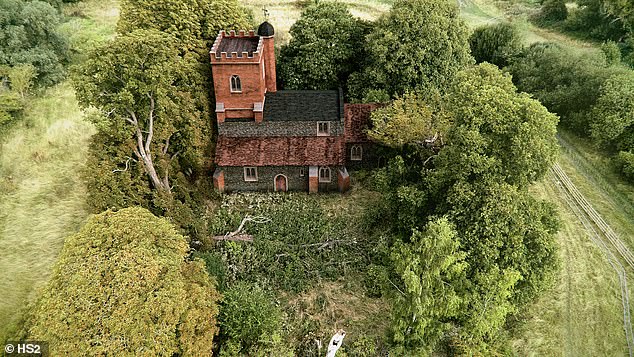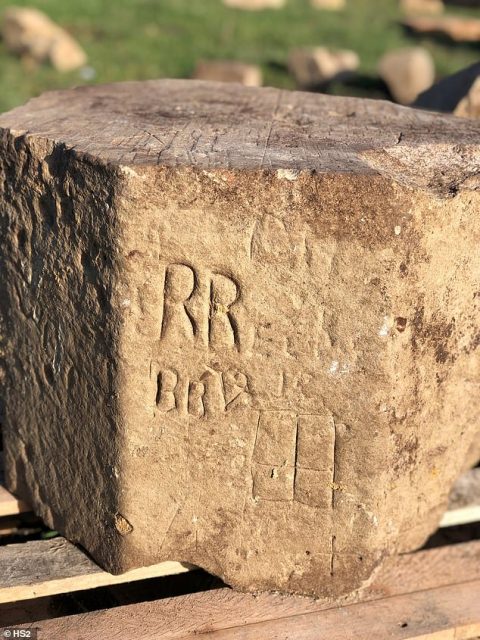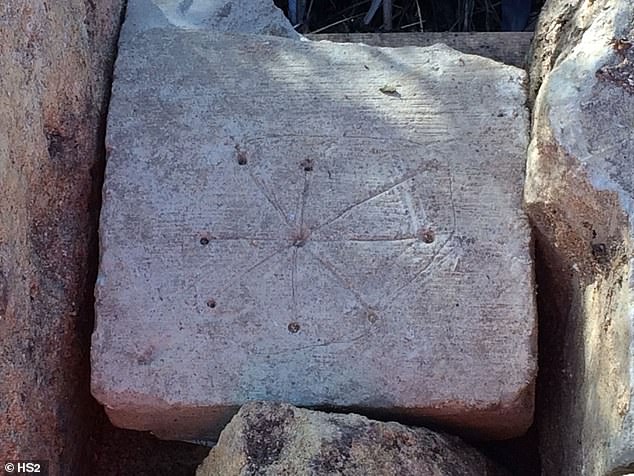In Stoke Mandeville, England a new railway, HS2, is being built to cover the distance between London and Birmingham under protests from many Brits.
Part of the problem is that the proposed line runs through the ruins of the 12th century Church of St. Mary the Virgin, its graveyard and the small town that surrounded it.
Not only were the ruins found but some stones displayed witches’ marks – drilled holes with lines carved outwardly in order to protect the worshippers from evil spirits that would be trapped in a maze.

Some believe the markings can be sun dials but as it was placed on a rock at the western side of the building rather than the usual south wall that claim is doubtful. Witches marks have been found on cave walls, homes and barns usually near the entrance, windows and the fireplace mantel.
According to smithsonianmag.com, the church was built about 1070 just after the Norman Conquest as a private church for the lord of the manor at the time, Remigius, Bishop of Lincoln. By the 1340s the church was expanded to include the entire town.
It was abandoned in 1866 but still allowed burials until 1908 and finally was condemned and demolished in 1966 by the Royal Engineers.

According to the Domesday Book, a manuscript record of the Great Survey which included most of England and parts of Wales completed by order of King William the Conqueror in 1086, the village had twenty four men living there.
If the uncounted elderly, women and children were added the likely number would be closer to about one hundred and twenty five people. The village covered about nine hundred and sixty acres and there was a mill.

Not only were witches marks present but carved molding were found in the rubble. Of the gravestones found, some were knocked over but many were still standing.
The most recent stone bears the date of death as 1905, according to a paper written by Peter Marsden of the Buckinghamshire Archeological Society, Last chance for Stoke Mandeville’s deserted village? published in 2012.
The site has never been excavated and Marsden fears that if the railway line goes ahead as planned it would cut right through the old Saxon Norman church and its graveyard. While many other places along the HS2 route have financial centers and important ports, Buckinghamshire has a natural and historic environment that goes back centuries with a large tourist base.

The proposed line also goes through prehistoric sites like Grim’s Ditch, as well as Roman and Medieval remains and a two hundred and fifty mile per hour train as well as all of the dump trucks, heavy highway equipment, service roads and blocked roads can damage other historic sites nearby.
The site has never been officially recognized as a scheduled ancient monument so is unprotected. The HS2 route recognizes monuments and buildings that are protected but leaves Stoke Mandeville out of that list.
The local archaeology service is working to bring known historic environment records for Stoke Mandeville’s deserted village and other undesignated historical assets along the route of HS2 to the attention of those in charge but fear it may be a long battle.
Those opposing the line feel the site should be subjected to a geophysical survey to determine the size of the village and if it is standing on top of even older ruins.
The controversy surrounding HS2 is still going on as according to theguardian.com. In October of 2020 the former tree of the year of 2015, a two hundred and fifty two year old pear tree, was destroyed in Warwickshire to the devastation of the residents.
Additionally, the price tag for the new rail line has increased by eight hundred million pounds since the first proposal because of the discovery of asbestos in demolitions only a few months into construction.
Another Article From Us: Neanderthal Woman’s Walk of Love 90,000 Years Ago Between two Caves 65 Miles Apart
The impact of Covid-19 is also slowing down work. As for the destiny of the Church of St. Mary the Virgin, only time will tell.
